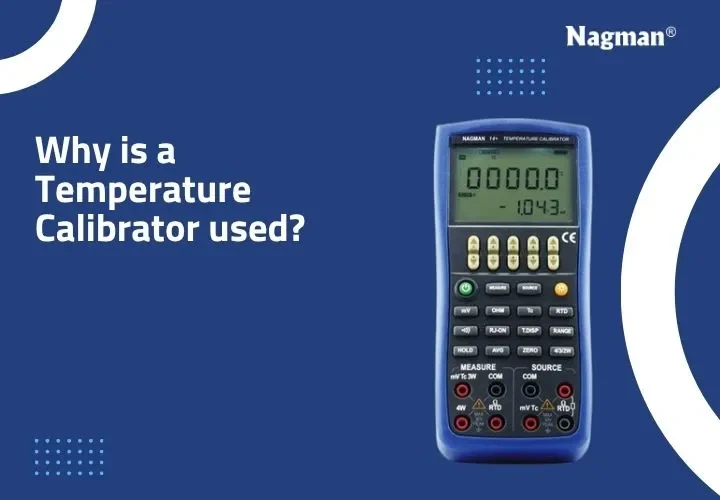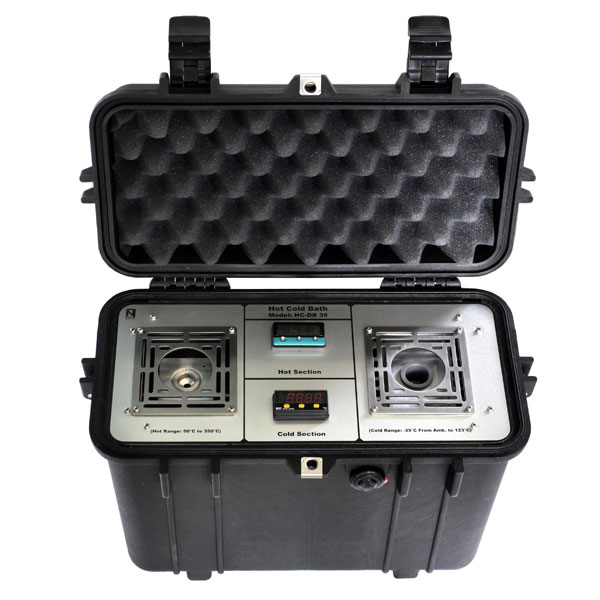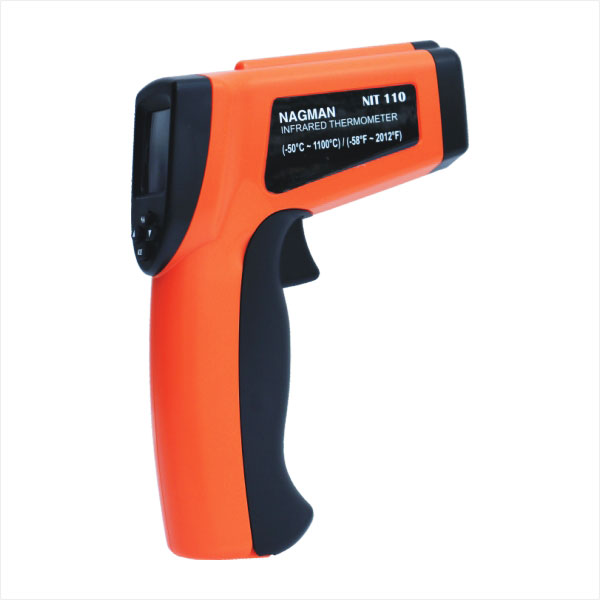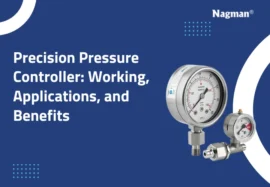Temperature is the most measured aspect in any industry, and especially in the process industry, accurate temperature readings are essential for the seamless running of all operations. Temperature calibrators are used to calibrate temperature instruments in industries. There are various types of temperature calibrators, ranging from handheld devices for laboratory calibrations to heavy-duty dry block temperature calibrators suitable for on-site calibrations. In this blog, we will take a deeper look at temperature calibrators and their use.
Temperature-measuring devices in Industries
We are all very much familiar with one of the temperature-measuring instruments, and that is a thermometer. It is the most commonly used device with a temperature sensor bulb filled with liquid mercury that raises in the measurement tube with temperature rise. Today, the typical thermometer is replaced by digital thermometers to reduce the errors occurring while making manual readings. When it comes to measuring anything, accuracy plays the most important role. Why would we want to take measurements at all if we do not want accurate readings?
When it comes to temperature-measuring devices in industries, it does work on the same principle but on a much larger scale when compared to a handheld thermometer. Also, a domestic thermometer is designed to read temperatures between 0 to 100 degrees Celsius, depending on what it is used for. Cooking thermometers read up to 100 degrees Celsius, medical thermometers maintain between 35 to 42 degrees Celsius, etc. However, industrial thermometers may have to read temperatures as low as -100 deg Celsius to temperatures as high as 350 deg Celsius or more. Devices that are used in industries are of various types, like pyrometers, infrared thermometers, thermocouples, resistance thermometers, etc.
How does a Temperature calibrator work?
A temperature calibrator is any device that can be used to determine if the temperature-measuring device is displaying accurate readings. They can also be used to see if the readings of temperature devices are within the specified limits of error and accuracy. The commonly used types of temperature calibrators in industries include dry-block calibrators, thermometer calibrators, dry well calibrators, temperature baths, infrared calibrators, ovens, etc. whatever may be the choice of calibrator, the principle is similar. There are known standard readings for a few things, like the current atmospheric temperature or even the standard body temperature of humans. When taking our temperature, if the thermometer shows a drop of 2 to 3 degrees, we know for sure that the thermometer is showing an error. Then, we would need to calibrate the thermometer to match the known standard.
It is the same when it comes to industrial temperature devices. A standard thermometer or a calibrated thermometer is taken for reference and the thermometer that needs to be calibrated is placed at a stable temperature. Then the readings shown by the device under test are compared against that of the calibrated thermometer. Depending on the results of the test, the necessary changes are made to the thermometer under test. To match the readings, the temperature can either be provided through simulation or a physical heat source.
Calibration through simulation
In this kind of temperature calibrator, the temperature is induced electrically. These devices are smaller in size, usually, handheld and easy to carry around. The entire device runs on a simulator which decides the temperature sensor to simulate and also at what temperature the sensor should be simulated during the operation. The display on the calibrator shows the readings of the electrical output from a temperature sensor.
Calibration through physical heat
These are rather larger in sizes like temperature baths or ovens. These kinds of temperature calibrator that produces physical heat are dry block calibrators, IR calibrators, temperature chambers, calibrations baths, etc. These calibrators come with a built-in sensor for reading temperature and at times when higher accuracy or lower error rates are needed, external sensors can be introduced too.
Dry block calibrators
Dry block temperature calibrators are the most widely used calibrators in the industry. It is also one of Nagman’s specialties as we have a wide range of dry block calibrators that could suit all kinds of requirements. There are portable, benchtop models of calibrators that are very easy to use and have high accuracy range. We also house some of the best heavy-duty dry block temperature calibrators that can be used for rugged purposes like calibrations on-site.
Automating Temperature calibrations
We have already seen why temperature calibration is important and how it is done. With that in mind, it is safe to say that temperature calibration must take place regularly in any industry to keep the accuracy of the temperature devices in check. However, temperature changes and variations are a slow process, and hence, it takes a lot of time to calibrate temperature devices. This is where the automation of temperature calibration can help. The process would still take a lot of time; however, once the process is automated, you would not need to be present in the calibration spot. Another advantage of automating calibration is that it will be done the same way every single time, which promises consistency and accuracy.
If you are looking for top-notch calibrators, feel free to browse through the products on our page- https://nagman.com/
For any queries, contact us at-
Phone- +91-44-66777000, 11, 22, 33
Email- support@nagman.com








